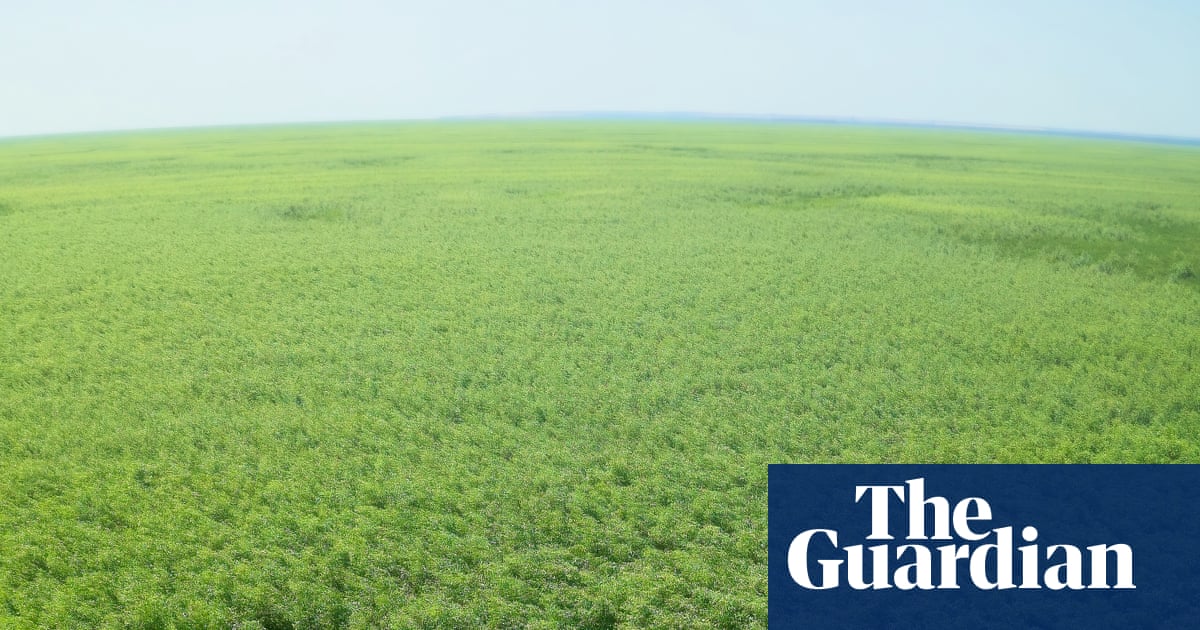“This is Velykyi Luh – the Great Meadow,” says Valeriy Babko, a retired history teacher and army veteran, standing on the former reservoir shoreline at Malokaterynivka village. For him, this extraordinary new-old environment represents more than nature alone. “It is an ancient, mythic terrain, woven through Ukrainian folklore,” he says.
That historic landscape vanished in 1956, when the Soviet Union completed the Kakhovka dam and hydroelectric power plant and flooded the entire region. What had once been an ecological and cultural cradle became a reservoir, and its rich, living systems were entombed beneath the water.
Then, in 2023, that water was unleashed as weapon: the Nova Kakhovka dam on the Dnipro River, under the control of Russian forces, was blown up (Russia denies bombing it). It sent a vast, destructive flood of water and sediment downstream, destroying villages and killing an unknown number of people; figures for the death toll range from a few dozen into the hundreds.
In the immediate aftermath of the bombing, Kakhovka reservoir resembled a desert of drying mud and cracked silt. Now, plants grow so thickly you must scythe through the vegetation covering the earth embankment before the basin comes fully into view. The size of it is difficult to take in: the reservoir’s surface area was 2,155 sq km (832 sq miles) – bigger than New York City and its five boroughs.
The latest report from the Ukrainian War Environmental Consequences Work Group (UWEC) confirms what satellite images, ecologists and field researchers began to observe over the past two years: the ecosystem of the lower Dnipro is not only recovering, it is evolving. The drained reservoir is now home to dense growths of willow and poplar and enormous wetlands; endangered sturgeon have returned to waterways; wild boar and mammals to the forests; and there are signs of spontaneous regeneration across a huge stretch of floodplain.
“We are witnessing the emergence of a massive natural floodplain forest system,” says Oleksiy Vasyliuk, co-author of a 2025 report on the reservoir for the UWEC and head of the Ukrainian Nature Conservation Group. “It is not a managed project. It is the land itself returning to life.”



Where is your article link? This is all I could find, which clearly is more optimistic: https://www.yahoo.com/news/deer-boar-could-roam-forests-111101014.html
Sorry about that! Had trouble uploading the thumbnail and accidentally pasted the image link instead of the article. Post is updated to https://www.theguardian.com/environment/2025/jul/22/in-a-bombed-out-reservoir-ukraine-huge-forest-grown-a-return-to-life-or-toxic-timebomb
Oh, okay, thanks. Interesting…